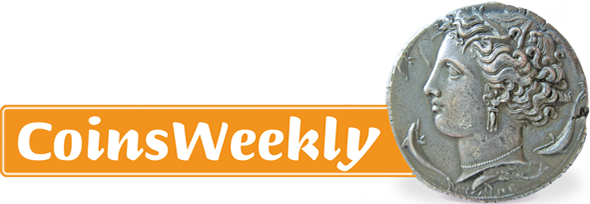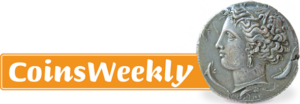Dutch Rarities Fetch 5.2m at Künker Sale
Künker
Auktion 393
Coins
27-28 September 2023
D-Osnabrück
Lodewijk S. Beuth’s career as a collector began when he wanted to acquire some gold coins at the Schulman coin shop in the 1950s, with the end of the Second World War still a vivid memory. He wanted to purchase some gold so that he would have a small stock for emergencies. Jacques Schulman suggested that he invested in pieces of numismatic importance instead. Lodewijk Beuth was convinced by the charismatic coin dealer’s arguments, caught the numismatic bug and dreamed the dream of assembling the largest and most beautiful collection of Dutch coins of his generation. He lived up to his aspirations.
The first part of this unique collection was put on the market on 27 and 28 September 2023. Künker sold it in collaboration with Laurens Schulman B. V. in Osnabrück. It was a major event for the community of collectors of Dutch coins, many of which personally attended the auction sale. After all, it had been almost half a century since a comparable collection entered the market.
This was also reflected by the hammer prices. The total estimate had been a little over 2m euros. The total result was 5.2m euros, i.e., more than two and a half times the estimate.
There were numerous remarkable individual results. We present the ten most expensive pieces of the Beuth Collection. Many of them broke previous records. For example, according to CoinArchives, the highest result of a coin from the Kingdom of the Netherlands had been at 117,000 euros. Read on to find out about the new record.
As always, if two coins achieved the same result, the specimen with the higher increase in price compared to its estimate will receive the higher rank.
10th Place:
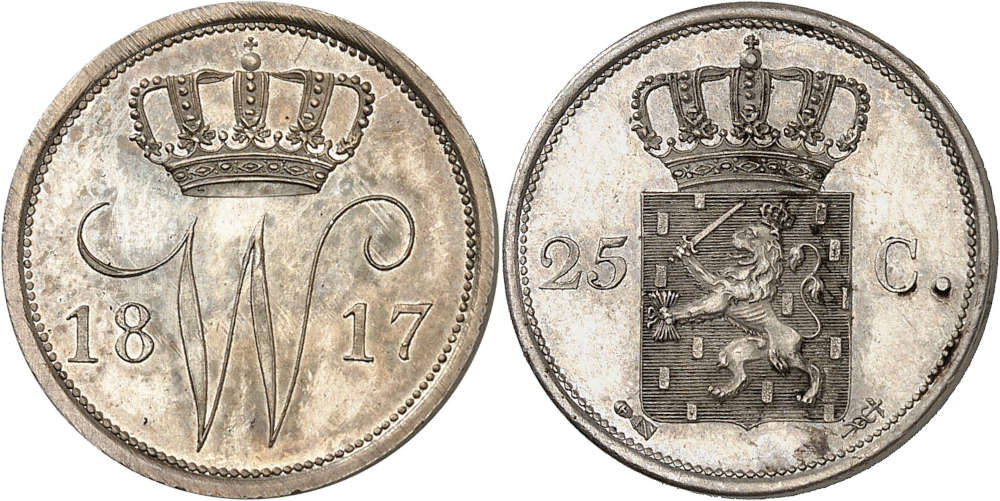
No. 3284. William I, 1813-1840. Silver pattern of 25 cents (Kwartje), 1817, Utrecht. Extremely rare. Purchased in 1954 from the Menso Collection. Proof. Estimate: 25,000 euros. Hammer price: 100,000 euros.
9th Place:
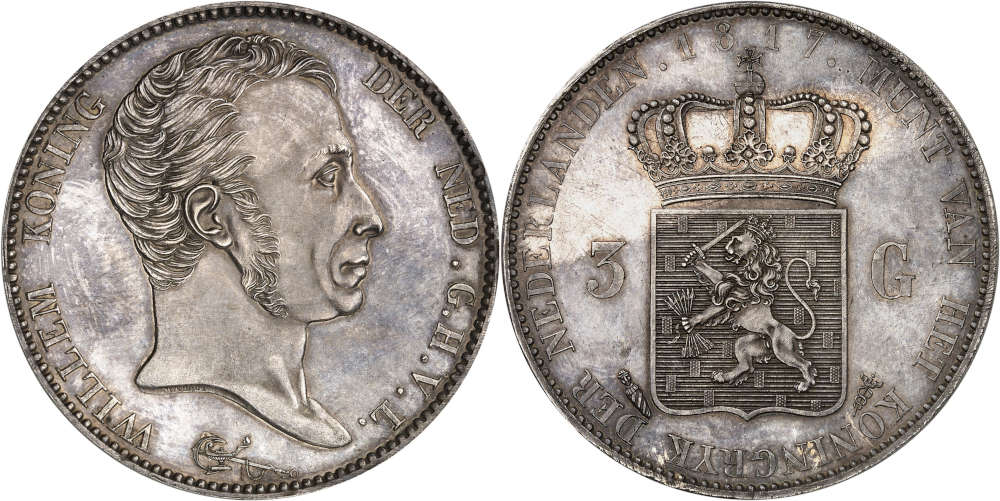
No. 3234. William I, 1813-1840. 3 gulden, 1817, Utrecht. Only 12 specimens minted. Purchased in 1954 from the King Farouk Collection. First strike. Prooflike. Estimate: 30,000 euros. Hammer price: 100,000 euros.
8th Place:
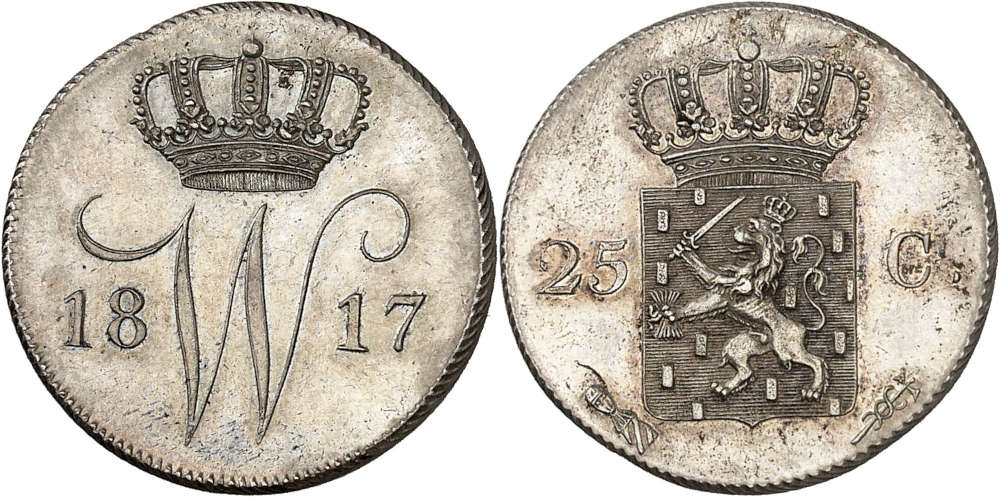
No. 3282. William I, 1813-1840. Silver pattern of 25 cents (Kwartje), 1818, Utrecht. Very rare. Purchased in 1988 from the Berkman Collection. Proof. Estimate: 25,000 euros. Hammer price: 110,000 euros.
7th Place:
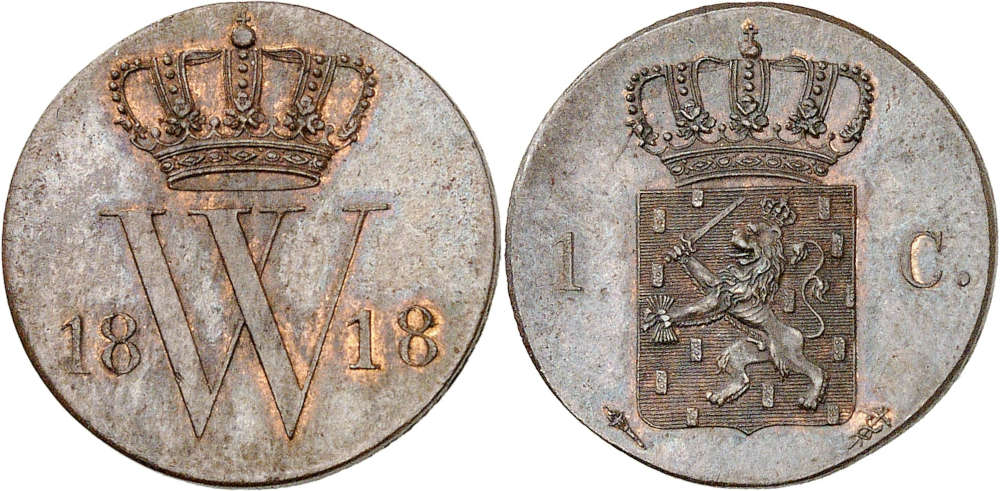
No. 3326. William I, 1813-1840. Copper pattern for the cent, 1818, Utrecht. Only a few specimens minted. Purchased in 1951 from Jacques Schulman. About FDC. Estimate: 20,000 euros. Hammer price: 110,000 euros.
6th Place:
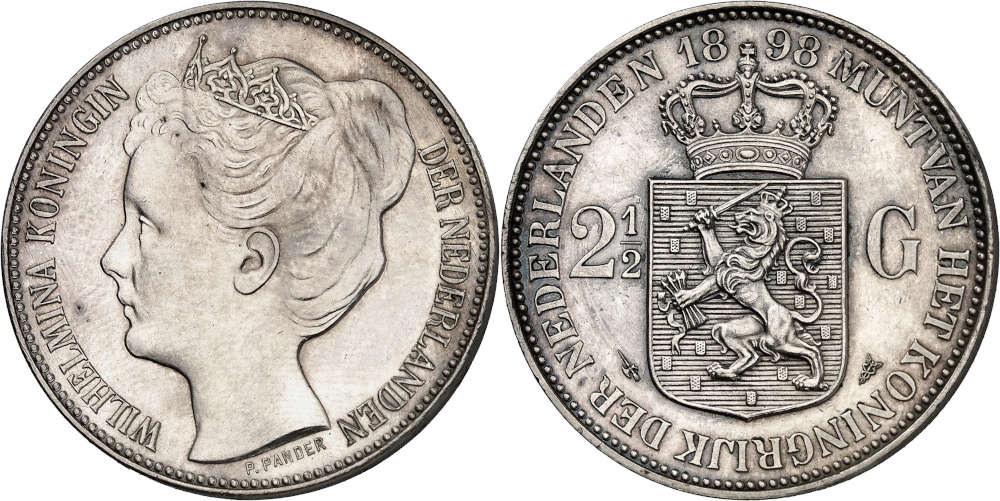
No. 3696. Wilhelmina, 1890-1948. Silver pattern of the 2 1/2 gulden, 1898, Utrecht. Unique? Purchased in 1955 from a Jacques Schulman sale. Proof, minimally worn. Estimate: 50,000 euros. Hammer price: 120,000 euros.
4th Place:
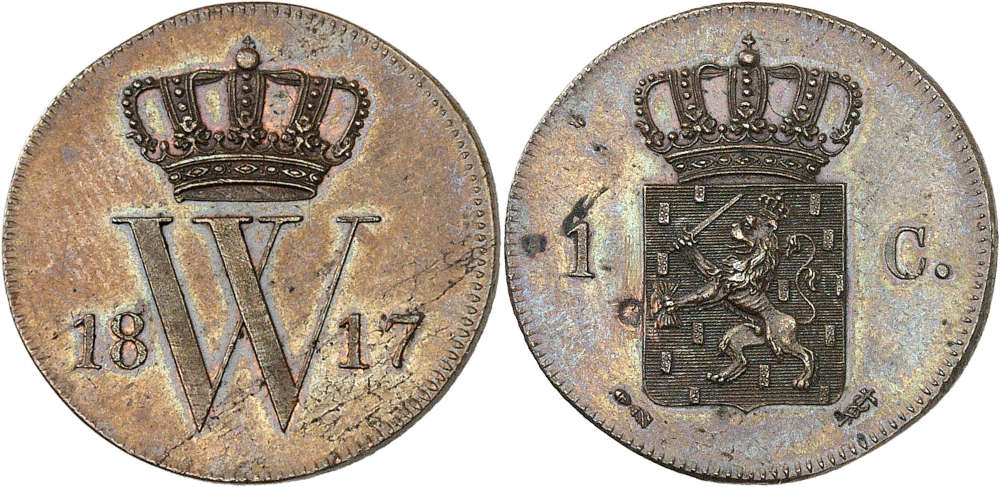
No. 3325. William I, 1813-1840. Copper pattern for the cent, 1817, Utrecht. Only a few specimens minted. Purchased in 1998 from the van der Wiel Collection. First strike, about FDC. Estimate: 25,000 euros. Hammer price: 120,000 euros.
4th Place:
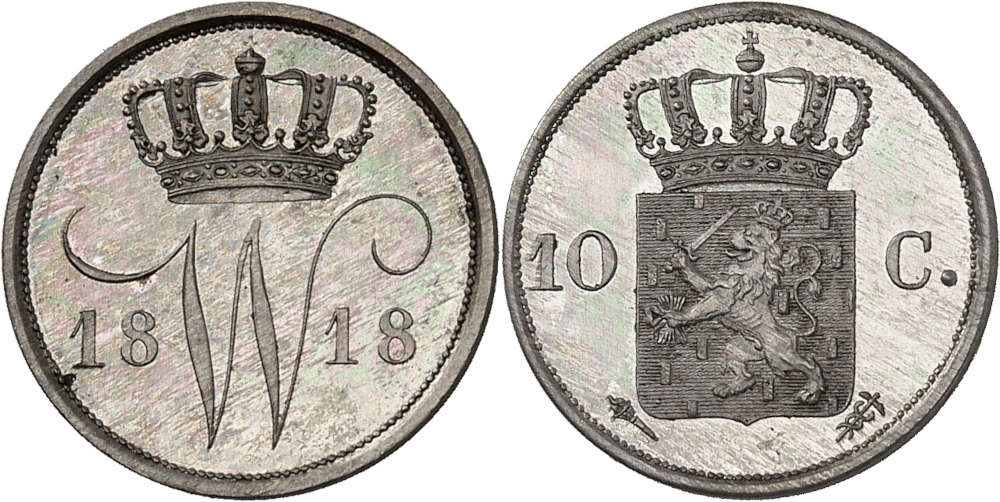
No. 3302. William I, 1813-1840. Silver pattern of 10 cents (Dubbeltje), 1818, Utrecht. Only 60 specimens minted. Purchased in 1954 from the Menso Collection. Proof. Estimate: 25,000 euros. Hammer price: 120,000 euros.
3rd Place:
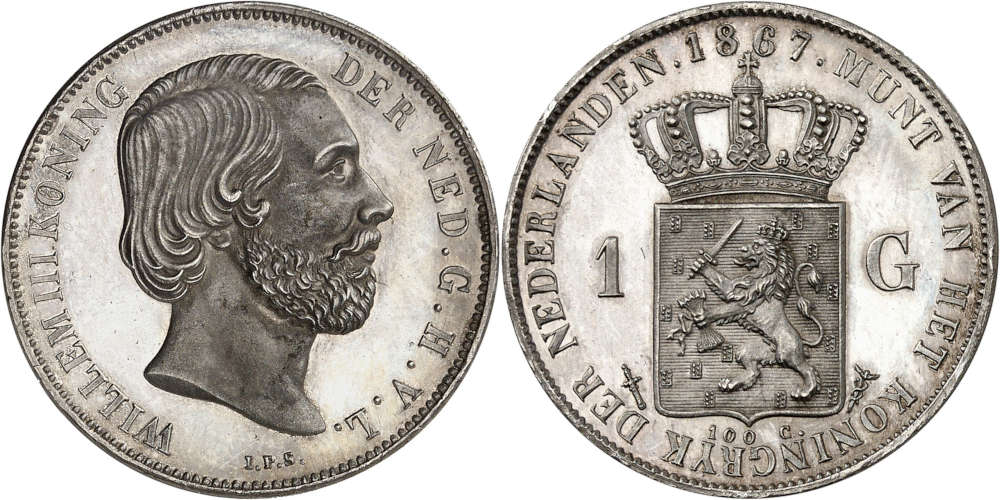
No. 3524. William III, 1849-1890. 1 gulden, 1867. Only a few specimens minted. Purchased in 1951 from Jacques Schulman. Estimate: 50,000 euros. Hammer price: 150,000 euros.
2nd Place:
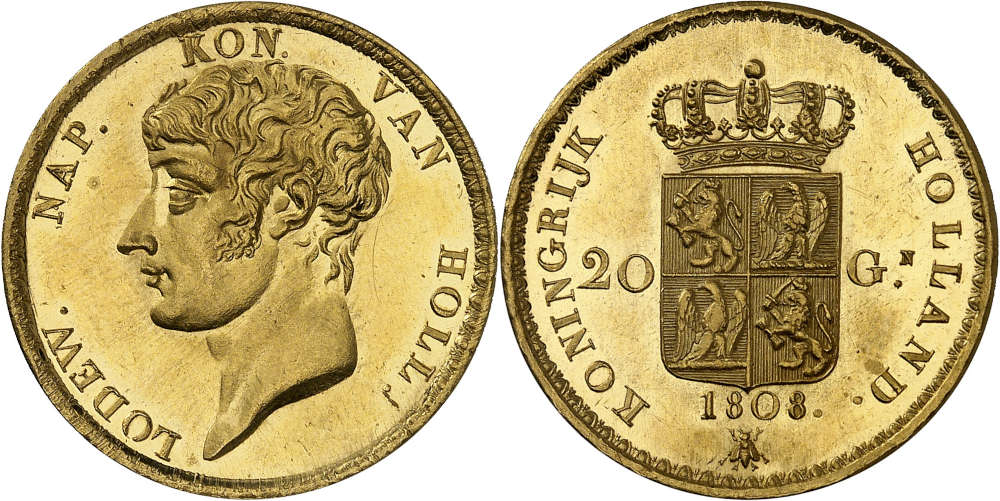
No. 3111. Louis Napoleon. 20 gulden, 1808, Utrecht. Extremely rare. Purchased in 1992 from a Coin Investment sale. Estimate: 40,000 euros. Hammer price: 180,000 euros.
1st Place:
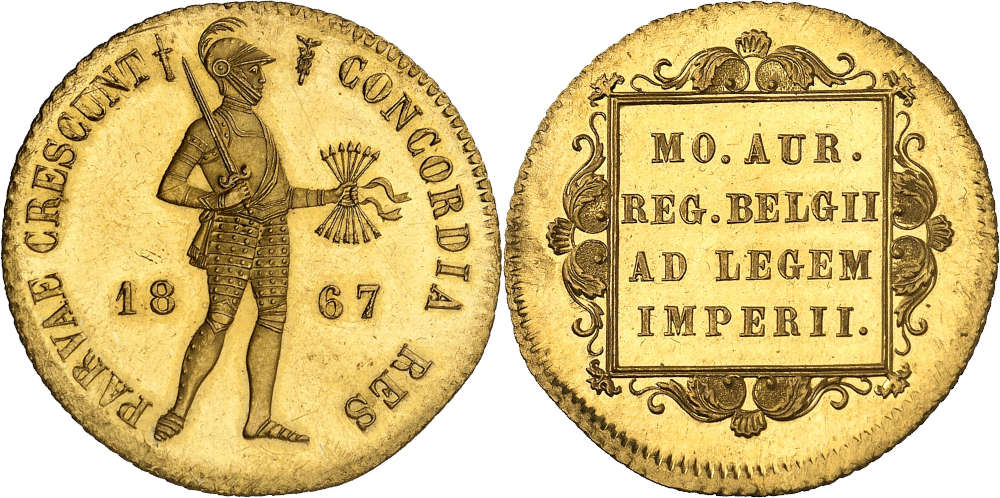
No. 3465. William III, 1849-1890. 2 ducats, 1867, Utrecht. Only 8 specimens are known of. Purchased in 1985 from Jacques Schulman. Estimate: 40,000 euros. Hammer price: 200,000 euros.
This means, the joint sale of Künker and Laurens Schulman set several records at once.
- At 200,000 euros, No. 3465 – the 1867 double ducat – is the new front runner as the most expensive coin of the Kingdom of the Netherlands.
- At 120,000, No. 3325 – the cent pattern of 1817 – holds the new record as the most expensive base metal coin of the Netherlands.
- And also at 120,000 euros, No. 3302 – the silver pattern of 10 cents (Dubbeltje) from 1818 – is now the most expensive pattern from the Kingdom of the Netherlands. However, its result is only marginally higher than that of the former record-holder, which was sold in 2020 for USD130,000 (= 116,974 euros).
We used CoinArchives as the basis for this review.
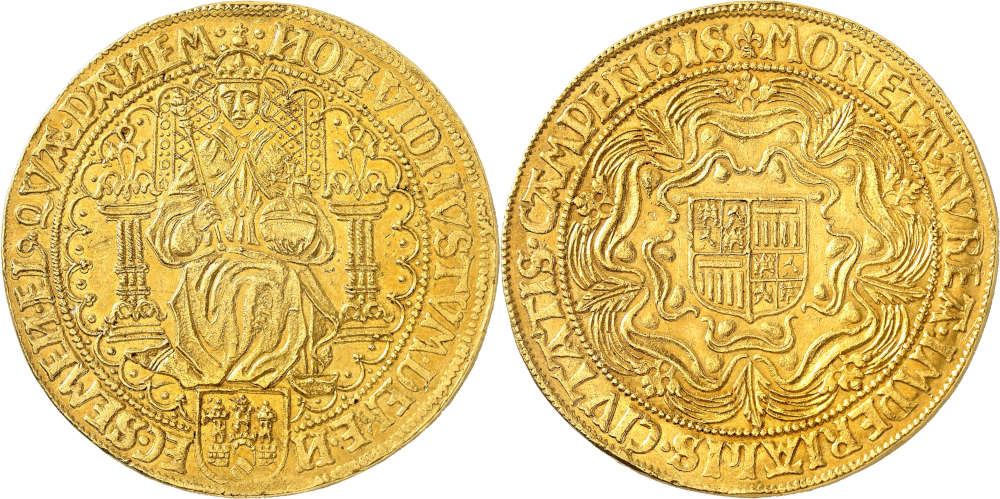
Campen. Eightfold rose noble n.d. (1600). Extremely rare. From auction Künker 362 (2002), Lot 1280. Estimate: 250,000 euros. Hammer price: 700,000 euros.
The Most Expensive Dutch Coin
There can be no doubt, the most expensive Dutch coin is still the eightfold rose noble from Campen, sold by Künker in 2022 in the context of the Salton Collection at a hammer price of 700,000 euros.
Although we only presented high-priced coins in this auction review, there were many pieces in both sales that any collector could have afforded. See for yourself and check out the results in detail.
If you have any questions, please do not hesitate to contact us at Künker, Nobbenburger Str. 4a, 49076 Osnabrück; phone: +49 541 / 962020 or via e-mail.





